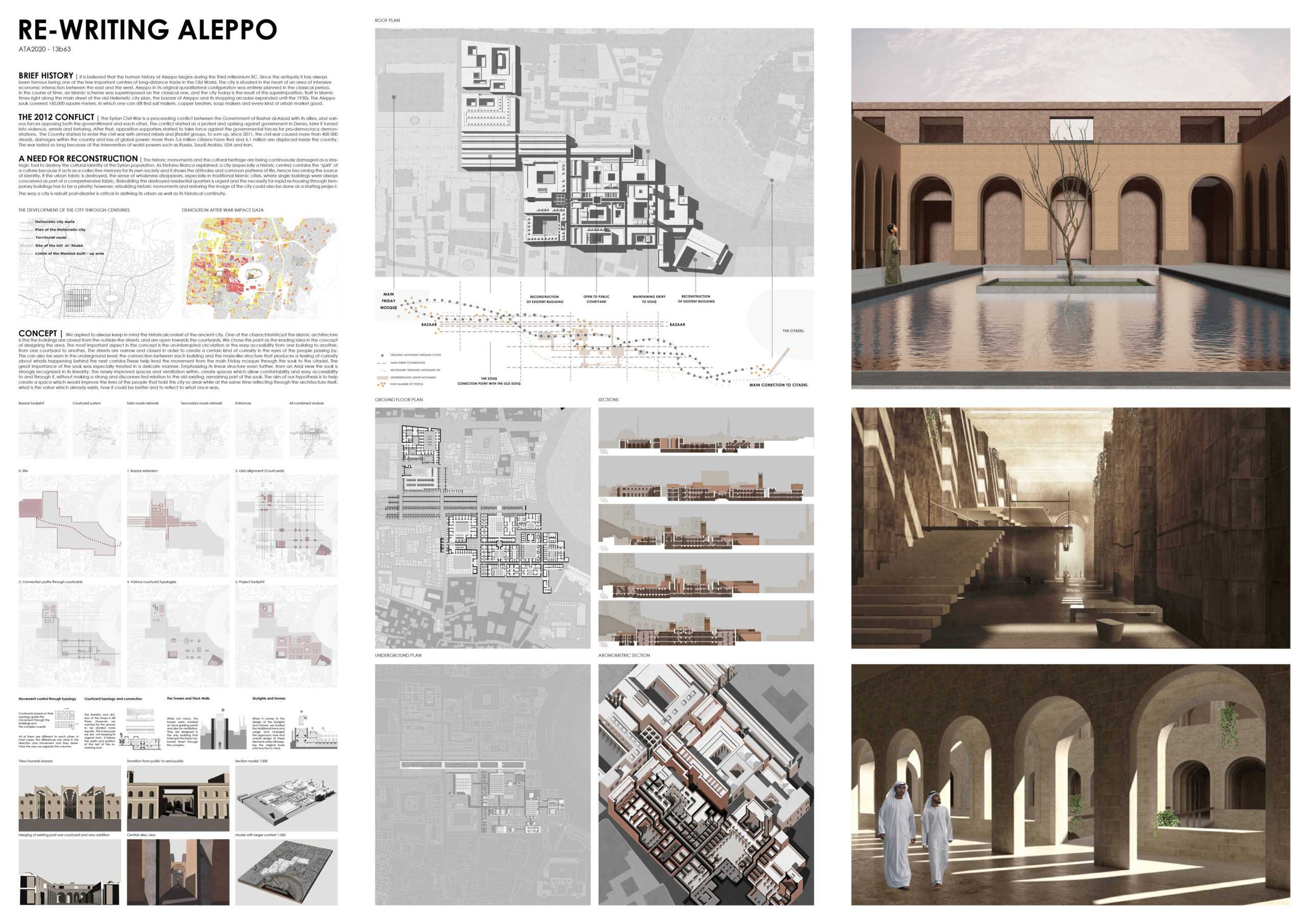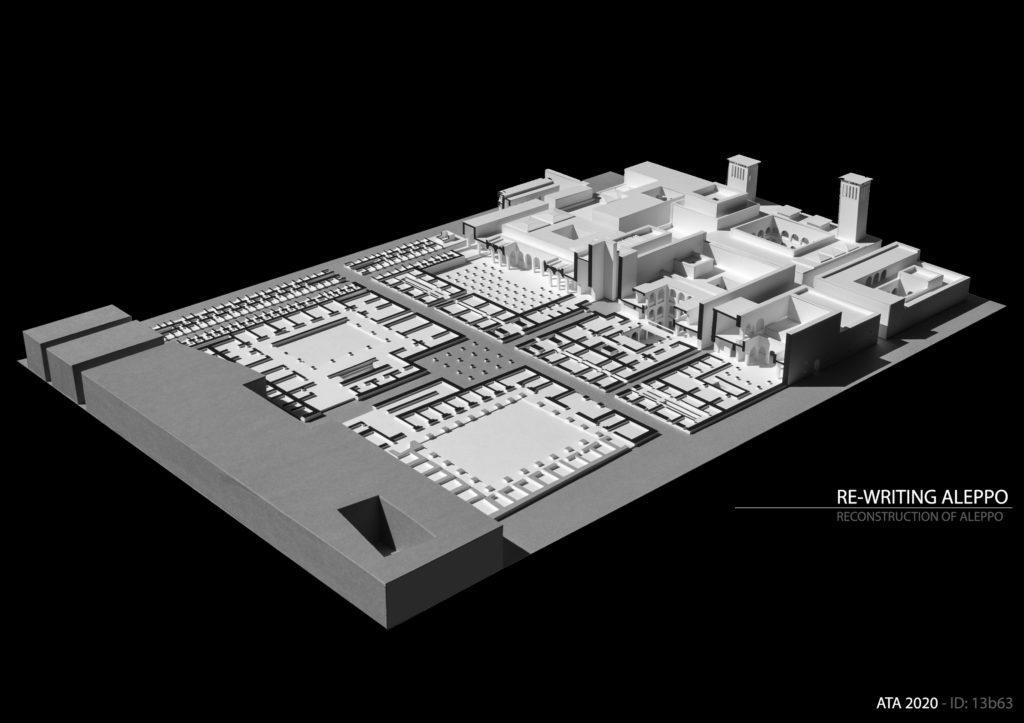There is an important debate on how to approach reconstructing a city that is ancient and rich with such historical value, ravaged by war as the great city of Aleppo.We developed a hypothesis placed in the center of the city that would improve the quality of life, while at the same time blending in with its surroundings and not imposing upon it.The aim was to create a series of spaces that would take lessons from the city,and create spaces that allow an easy movement throughout the city.The aim – to help create a place which would improve the lives of the people that hold these places so dear while at the same time reflecting through architecture,what is the value which already exists,how it could improve and to reflect to what once was.
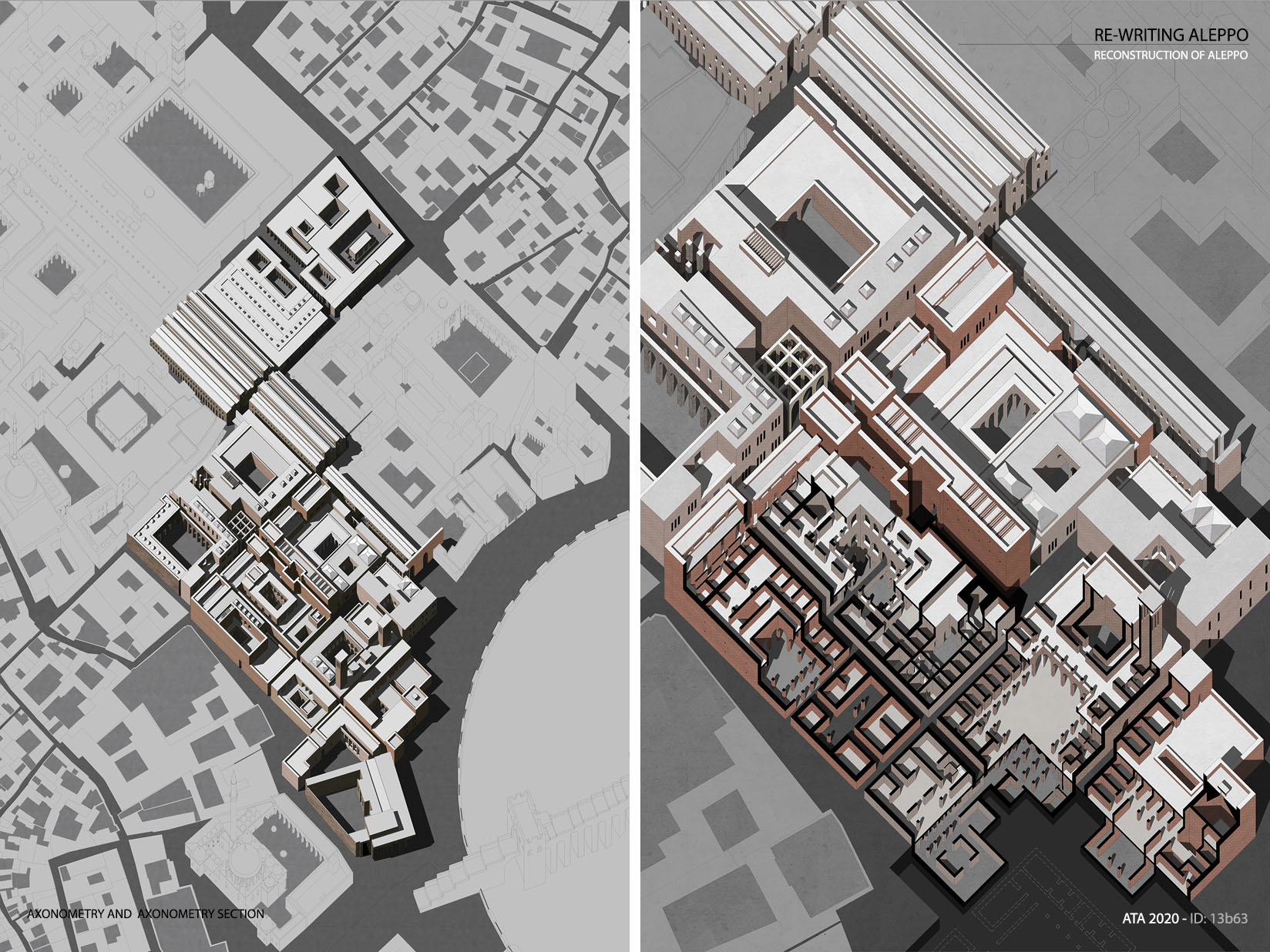
We aspired to always keep in mind the historical context of the ancient city. One of the characteristics of the Islamic architecture is that the buildings are closed from the outside-the streets, and are open towards the courtyards. We chose this point as the leading idea in the concept of designing the area. The most important aspect of the concept is the un-interrupted circulation or the easy accessibility from one building to another, from one courtyard to another. The streets are narrow and closed in order to create a certain kind of curiosity in the eyes of the people passing by. This can also be seen in the underground level; the connection between each building and the maze-like structure that produces a feeling of curiosity about what's happening behind the next corridor. These help lead the movement from the main Friday mosque through the souk to the citadel. The great importance of the souk was specially treated in a delicate manner. Emphasizing its linear structure even further, from an Arial view the souk is strongly recognized in its linearity. The newly improved spaces and ventilation within, create spaces which allow comfortability and easy accessibility to and through it, without making a strong and disconnected relation to the old existing, remaining part of the souk.
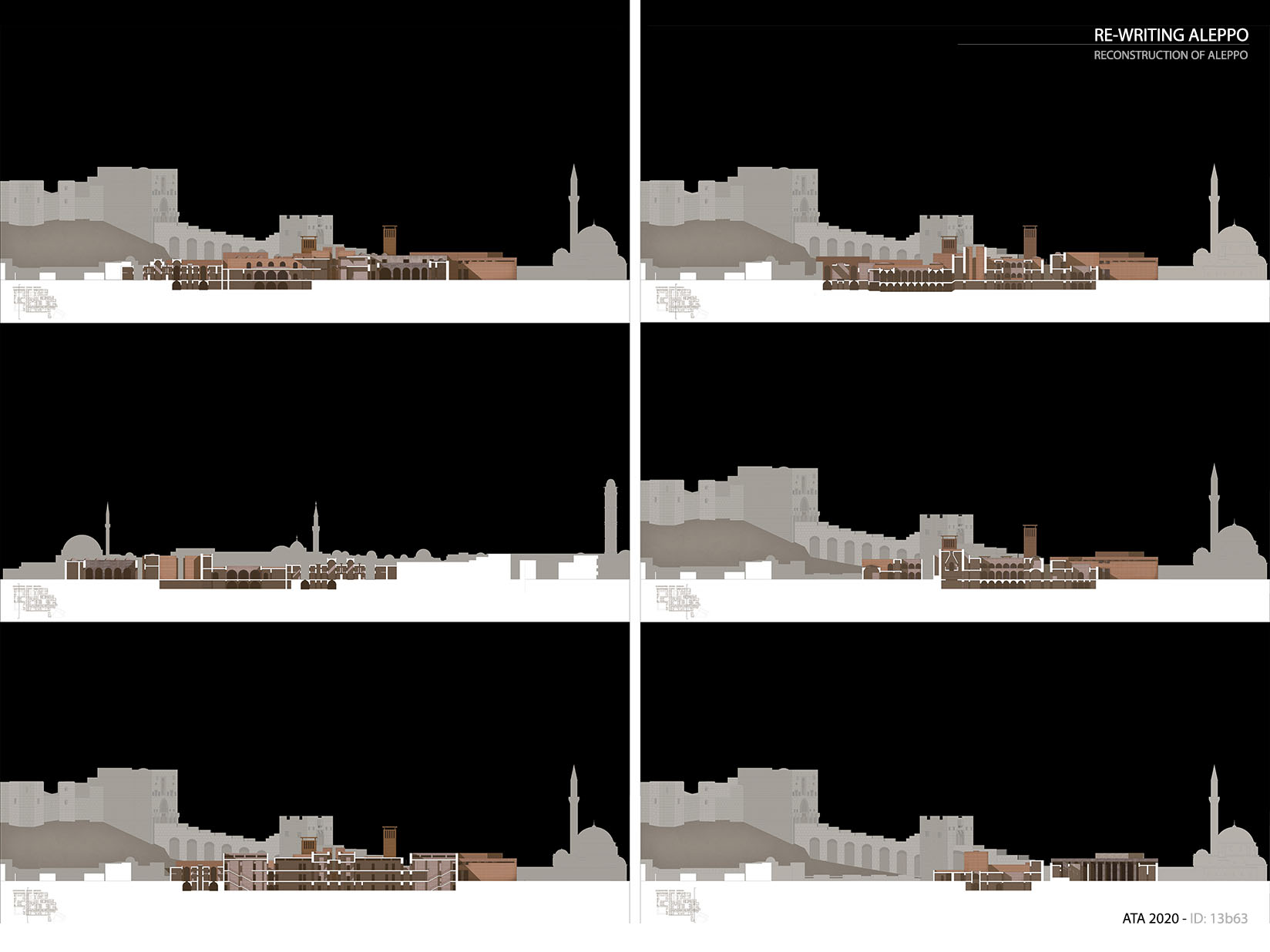
The historic monuments and the cultural heritage are being continuously damaged as a strategic tool to destroy the cultural identity of the Syrian population. As Stefano Bianca explained; a city (especially a historic centre) contains the ‘spirit’ of a culture because it acts as a collective memory for its own society and it shows the attitudes and common patterns of life, hence becoming the source of identity. If the urban fabric is destroyed, the sense of wholeness disappears, especially in traditional Islamic cities, where single buildings were always conceived as part of a comprehensive fabric. Rebuilding the destroyed residential quarters is urgent and the necessity for rapid re-housing through temporary buildings has to be a priority; however, rebuilding historic monuments and restoring the image of the city could also be done as a starting project. The way a city is rebuilt post-disaster is critical in defining its urban as well as its historical continuity.
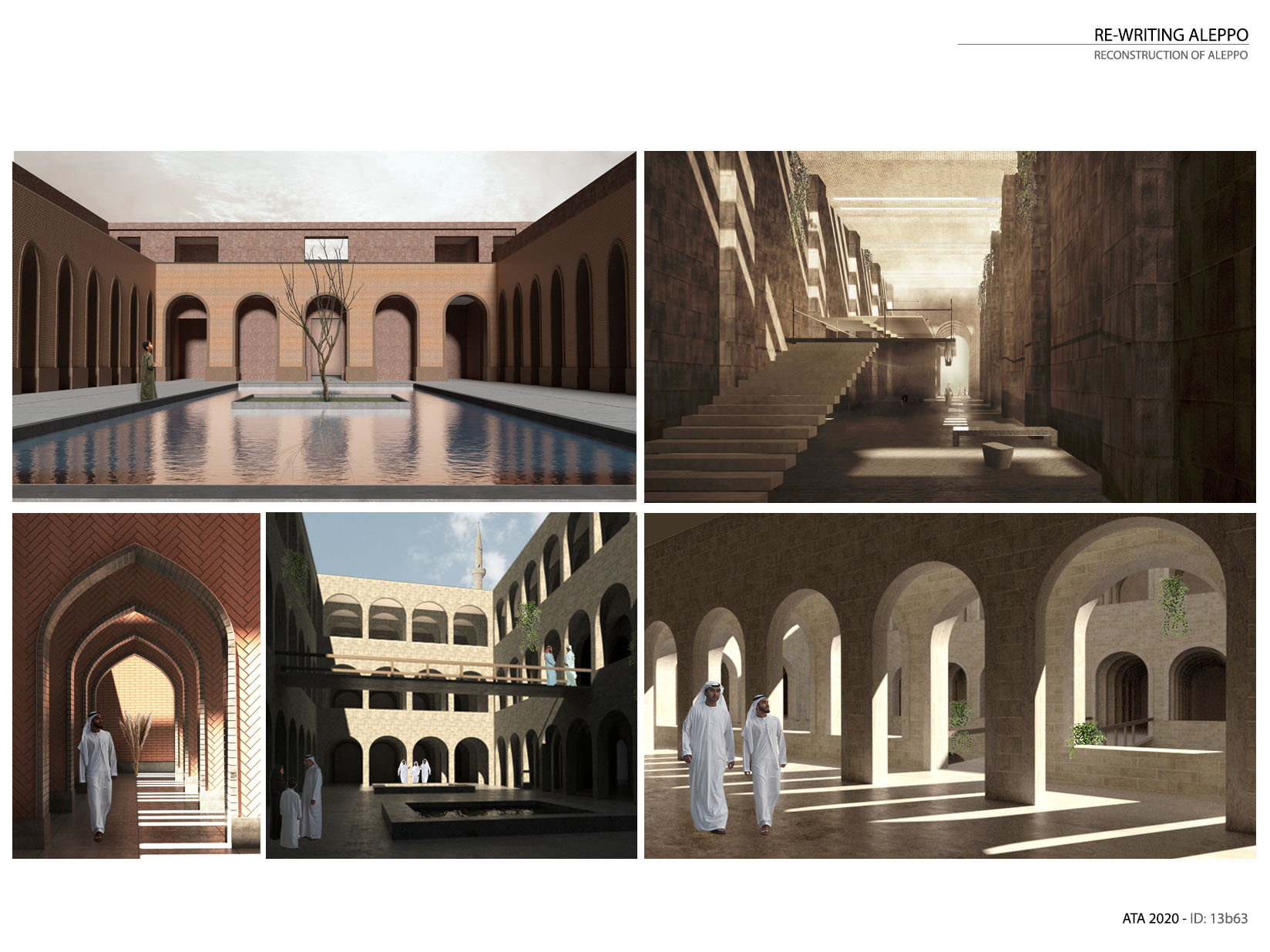
The Board:
